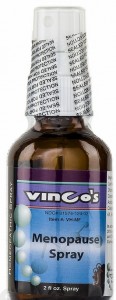Guyside: Caveat adventor
Earlier this week, FlashFree took a look at a homeopathic “Menopause spray” that promises relief of menopause symptoms.
It reminded me that there’s a universe of treatments out there for all sorts of disorders and diseases. When I was diagnosed with bladder cancer eight years ago, I spent lots of time reading about the conventional treatments (surgery, chemo, intravesical chemo, immunotherapy, radiation), and about some of the alternative treatments.
To this point, I’ve only used one form of treatment, because my tumours are relatively minor — a surgical removal of the tumours when they occur.
But alternative treatments or prevention strategies are important for many people. The problem comes with the sheer volume of information out there about all sorts of treatments, especially the less conventional ones, and the way things can change. Here’s one example:
For a long time, people concerned about prostate cancer were advised to take selenium and vitamin E supplements. But that advice changed a few years ago when a major trial began to discover that instead of being associated with reducing probability of prostate cancer, no benefit was being observed, and there were concerns.
Then late last year a research report found that instead of reducing likelihood, the supplements were associated with increasing the likelihood of a prostate cancer diagnosis.
The selenium-vitamin E research illustrates a few things. First, science changes. That’s the point of science — to understand more about a process or mechanism. And that’s why if you’re managing your health, you should be always ready to learn and to adapt to new findings.
Second, it’s good to have trusted professionals on your side. I enjoy being an involved patient, and I also enjoy helping family members or friends with medical issues if they ask for help. But I don’t believe that I’m necessarily more knowledgeable than a medical professional. It’s finding the balance between unquestioningly accepting every action recommended by your doctor or doctors and striking out on your own with no expert interventions. Using skills like those listed in the National Coalition for Cancer Survivors’ page on self-advocacy can make you a better patient and maybe a healthier one.
Third, miracles are rare. Google is a great asset, but there’s a lot of information out there that’s sketchy at best. Maintain a healthy skepticism about EVERYTHING you read or encounter. Ask yourself — or a professional — how likely it is that a root, a supplement, or some other unconventional treatment is a MIRACLE CURE for a disorder or disease. Don’t let depression or desperation colour your thoughts.
And for myGuyside readers: Happy Fourth of July!
Read MoreTo keep menopause at bay…
Just three sprays a day. Or something.
I ran across ‘Menopause Spray’ when I was researching this week’s blog posts. It is indicated for temporary relief of menopause symptoms. I hear that wine works just as well and it’s probably a lot tastier. 
Look, I am a HUGE fan of alternative strategies for treating the ‘pause. However, admittedly, I draw the line at homeopathic medicine. While many alternatives have been studied in scientific, controlled clinical studies, one of the main issues that I have with homeopathy is the lack of standardization among formulations. Still, homeopathy is delivered across Europe in both public and private healthcare systems. And, accordingly, many experts argue that when looking at thorough scientific reviews, the majority “do demonstrate more than placebo effects even when confined only to large number of high-quality trials,” adding that “ the clinical benefits of homeopathy cannot be explained by the hypothesis that homeopathy is ‘just a placebo’.”
According to an article published in Maturitas in August, 2010, the three basic tenets of homeopathy are that:
- Humans have a regulating mechanism responsible for growth and repair through which the homoeopathic remedy acts.
- Homeo (similar) pathos (suffering) encapsulates the law of ‘similars’ where the symptom picture guides the practitioner to a substance in nature which causes these similar symptoms. Provings (i.e. homeopathic investigative trials), toxicology and clinical cases give information about these homeopathic symptom pictures.
- Homeopathic medicines are ultra-dilute and these low doses reflect the body’s innate sensitivity to certain medicines.
The most important thing to remember when considering homeopathy as a therapeutic strategy is the approach; it’s not something you simply buy over the counter, but rather, it requires a careful, in depth consultation with a licensed practitioner who then considers your symptoms in totality and then matches the homeopathic medicines appropriately. In other words, like many treatments one size fits all simply does not work nor is it aligned with the basic philosophy of the practice. Which, gets us back to menopause spray. Following are the litany of ingredients, their strengths and what they are indicated for:
Lachesis Mutus 8X, 30X
- Climactic troubles
- Flashes of heat
- Palpitation
Helonias Dioica 6X
- Sensation of weakness
- Breasts swollen, nipples painful and tender
Sepia 12X
- Hot flashes with weakness and perspiration
Sanguinaria Canadensis 6X
- Flashes of heat
- Soreness of breasts
- Climactic disorders
Sulphuricum Acidum 12X
- Hot flashes, followed by perspiration with trembling
Lycopodium Clavatum 4X
- Weak memory
- Shakes head without cause
- Dryness of throat, without thirst
Kali Phosphoricum 6X
- Weak and tired
Amyl Nitrosum 30X
- Palpitation of heart
- Flushing of heat followed by cold and clammy skin and profuse sweat
Buyer, beware!!!
Read More






